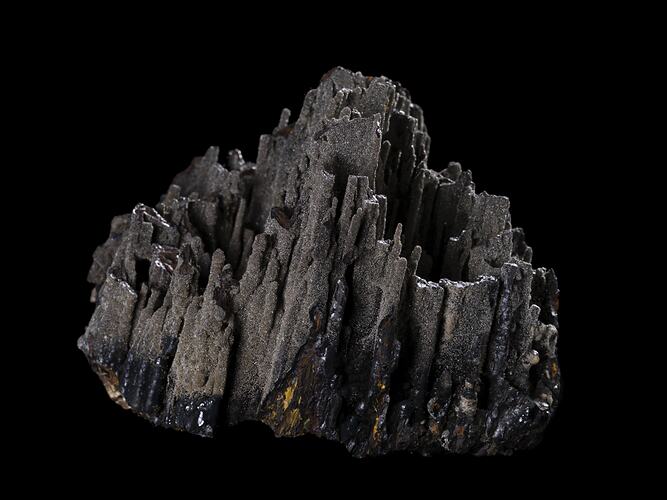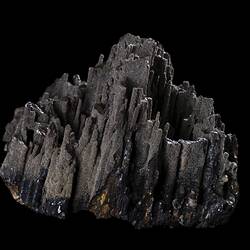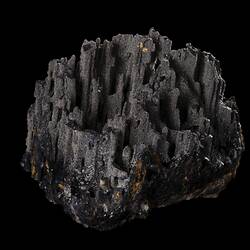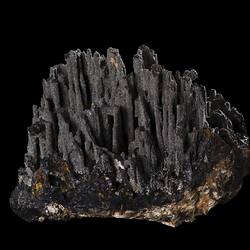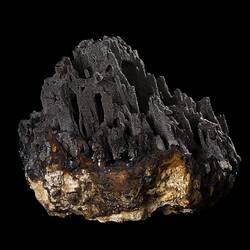Summary
Pyromorphite is a comon lead mineral. It is commonly green or brown but can also be grey, orange or white. Often it forms barrel-like hexagonal crystals, which are sometimes hollow.
Pyromorphite is known from around the world, including classic localities in Europe as well as sites in Mexico, Canada, the US, Zambia and newer finds in China. In Australia it is known from Tasmania, New South Wales, Queensland and the Northern Territory. This specimen comes from the famous mineral site of Broken Hill in New South Wales.
Pyromorphite is a lead chlorophosphate. It is a secondary mineral that forms from the oxidisation of other lead minerals, especially galena, a form of lead sulphide. It was once lumped into one group with the related minerals mimetite and vanadinite under the names "green lead" or "brown lead". In 1784 Pyromorphite was distinguished as a separate mineral by the German chemist Martin Klaproth (1743-1817) and named in 1813 by the German mineralogist Johann Hausmann (1782-1859). The name comes from the Greek "pyr" meaning fire and "morfe" meaning form because of the way it crystallises after being melted.
Specimen Details
-
Collection Names
-
Number Of Specimens
1
-
Specimen Nature
Form: Large
-
Species
-
Group
-
Class
-
Associated Matrix
Limonite
-
Donor
Mr Charles W. Chapman, 4 Jan 1899
see Notes -
Category
-
Scientific Group
-
Discipline
-
Collecting Areas
-
Type of Item
Geospatial Information
-
Country
-
State
-
Town
